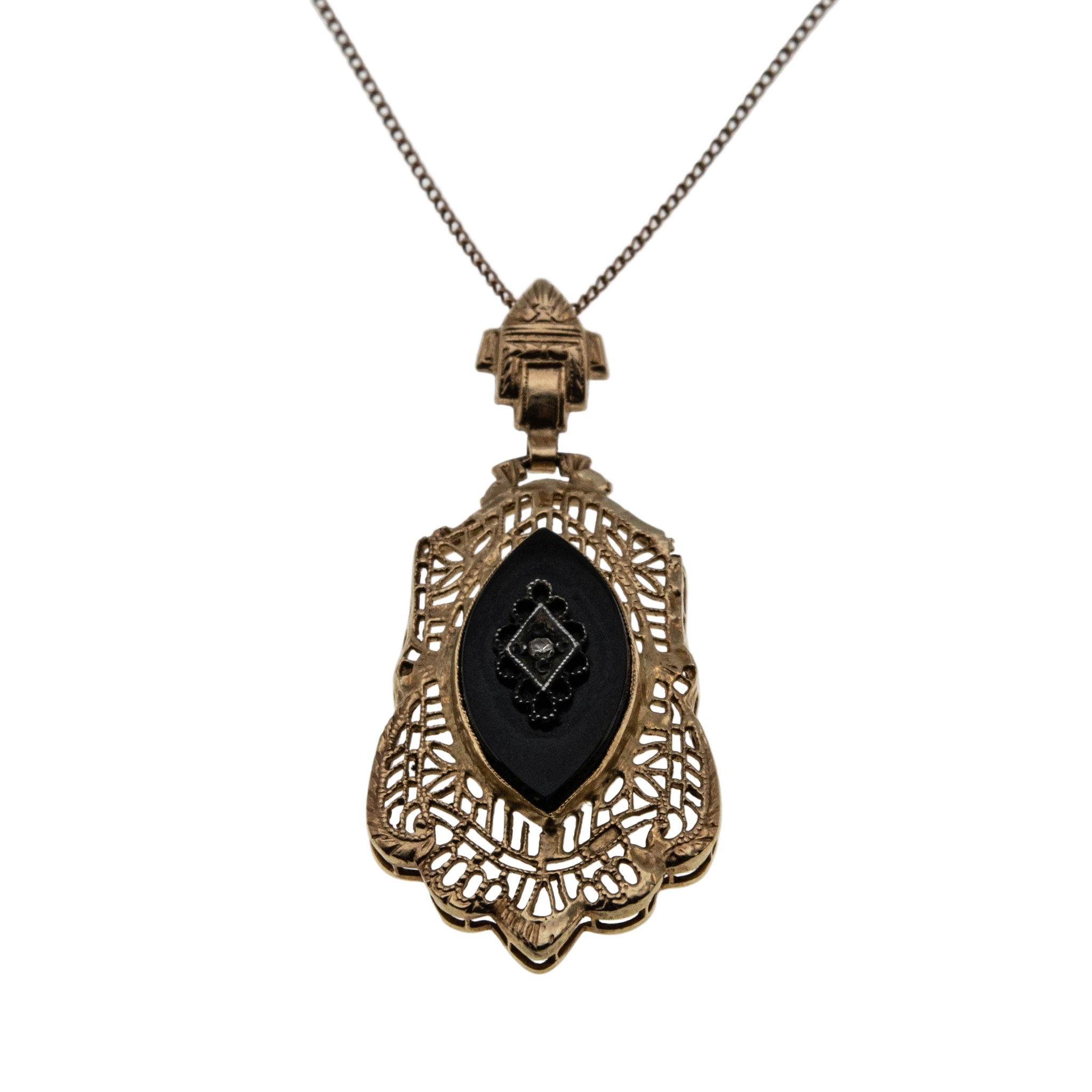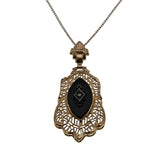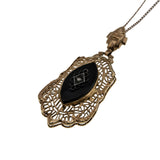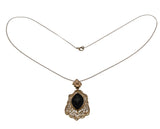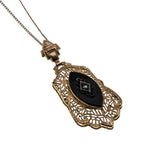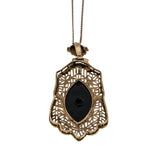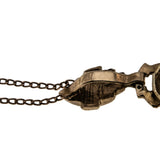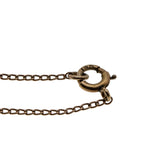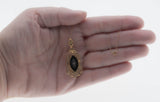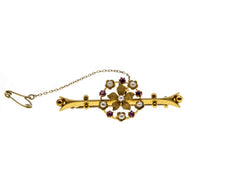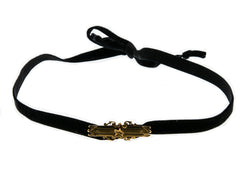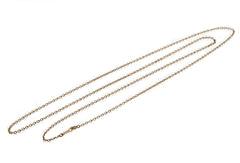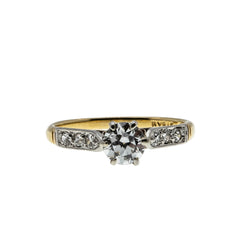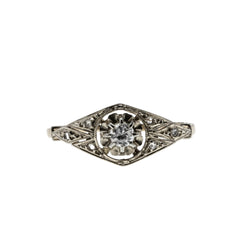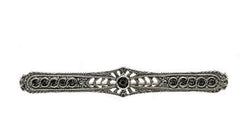Night Of Intrigue - Edwardian 14K Gold Natural Marquise Black Onyx & Diamond Filigree Pendant & Chain (EDP031)
Rarities Antique Jewelry
Night Of Intrigue - Edwardian 14K Gold Natural Marquise Black Onyx & Diamond Filigree Pendant. This exquisite pendant is crafted from 14K yellow gold, hallmarked 14K, and 585 (European hallmark for 14K). This pendant features one natural marquise black onyx, one natural single cut diamond, Edwardian era styling, and high quality craftsmanship. This wonderful pendant is comprised of a beautiful marquise shaped black onyx, which is set with a glowing accent diamond in the centre of the black gemstone. The black onyx is bezel set, and surrounded by exquisite fine filigree decoration. The pendant is accompanied by (what looks to be) its original chain. The chain is a curb link design, and features the original spring ring clasp in perfect working order. This antique Edwardian era pendant would make a perfect addition to any antique jewelry collection.
Comments: Beautiful elegant shape, exquisite filigree work, and so versatile. Rare Piece.
Note: Contemporary appraisals do not reflect the antique value of antique jewelry. It is highly recommended that this pendant be appraised for $2000.00 CD (Tax Excluded)
History: The earliest diamonds were found in India in 4th century BC, although the youngest of these deposits were formed 900 million years ago. A majority of these early stones were transported along the network of trade routes that connected India and China, commonly known as the Silk Road.
Agate derives its name from a river in Sicily, which the Greeks called Achates. Vast quantities of agate were discovered in this river as early as 300 B.C. During the reign of Julius Caesar, while engaged in the Gallic Wars, deposits of agate were discovered along the Nahe River in Germany.
Black agate/Black Onyx is a beautiful natural stone that has long been considered to have healing properties. It's a shimmering black crystal that shines as though it's had a century of polishing. Agate stone has been used by humans since the Bronze Age.

